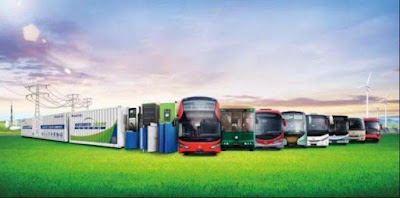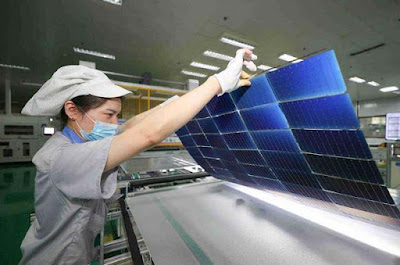Recently, a reporter from Inner Mongolia Daily learned from the Transportation Department of the Autonomous Region that by 2025, Inner Mongolia will basically eliminate diesel vehicles with emission standards of National III and below, and the proportion of new energy and clean energy buses in the region will reach 80%.
Li Xi, deputy director of the Transportation Department of Inner Mongolia Autonomous Region, introduced at the regular policy briefing on the "14th Five-Year Plan for Energy Conservation and Emission Reduction Comprehensive Work Implementation Plan of Inner Mongolia Autonomous Region" on the 9th. During the "14th Five-Year Plan" period, Inner Mongolia will coordinate industry development and The emission reduction target focuses on promoting new energy vehicles, optimizing transportation organization, promoting green infrastructure construction, improving the level of green travel services, building a green and low-carbon transportation system in the autonomous region, and supporting and serving the high-quality development of the autonomous region.
In the promotion of new energy vehicles, vigorously promote new energy vehicles, gradually reduce the proportion of traditional fuel vehicles, and promote the application of new energy and clean energy in public service vehicles such as urban buses, taxis, and urban logistics distribution. And the proportion of clean energy buses reaches 80%. At the same time, steadily promote the substitution of electric and hydrogen fuel vehicles for fuel freight vehicles, and carry out pilot demonstration construction of hydrogen energy vehicles and pure electric heavy trucks. And accelerate the planning and construction of charging piles, battery swap stations, gas stations, hydrogen stations and other supporting facilities in expressway service areas, passenger and freight hubs and other areas.
In terms of optimizing transportation organization and improving transportation efficiency. Facilitate the “transit to railway” of bulk goods, develop multimodal transport with railway as the backbone, and promote the planning and construction of special railway lines in mining areas, industrial enterprises and logistics parks with an annual freight volume of over 1.5 million tons of steel and coal. By 2025, the ratio of railway freight volume to Growth of around 10% in 2020. Comprehensively promote the development of urban green freight distribution, improve the urban and rural logistics network system, and promote intensive organization methods such as unified distribution, centralized distribution, and joint distribution to improve the efficiency of urban and rural distribution. Vigorously develop intelligent transportation, actively use big data to optimize transportation organization mode, improve organizational efficiency, and reduce ineffective and inefficient transportation.
In terms of promoting the construction of green infrastructure and improving the level of green travel services. Strengthen the intensive and economical utilization of resources, fully implement green construction of transportation projects, and promote the utilization of bulk industrial solid waste and the recycling of waste materials. Comprehensively promote and deeply implement the "Public Transport Priority" strategy, and guide the public to give priority to green and low-carbon travel modes. By 2025, the public transport travel rate in the main urban areas of the 12 alliance cities will reach 20%, and the green travel rate in the main urban areas of the cities will reach 65%.





No comments:
Post a Comment